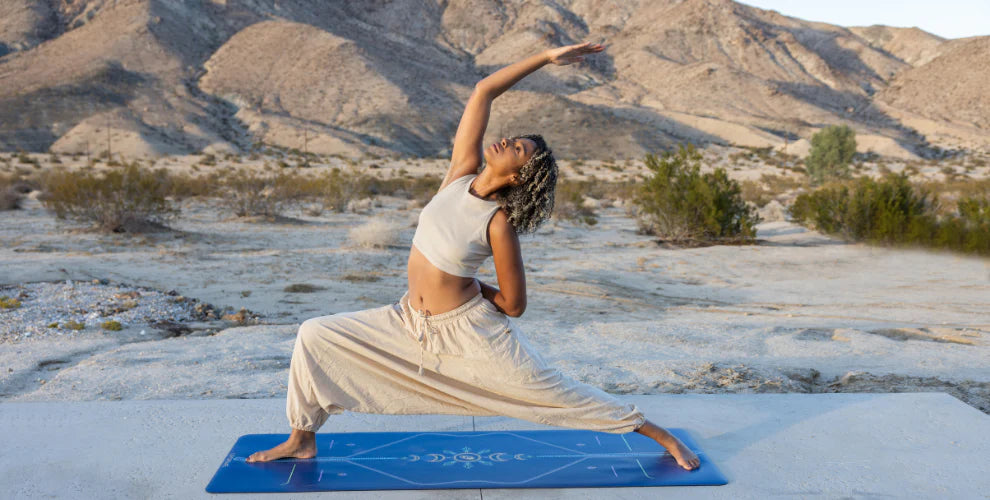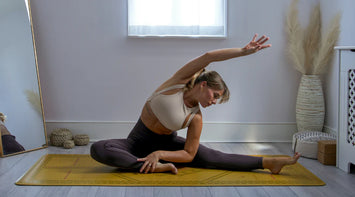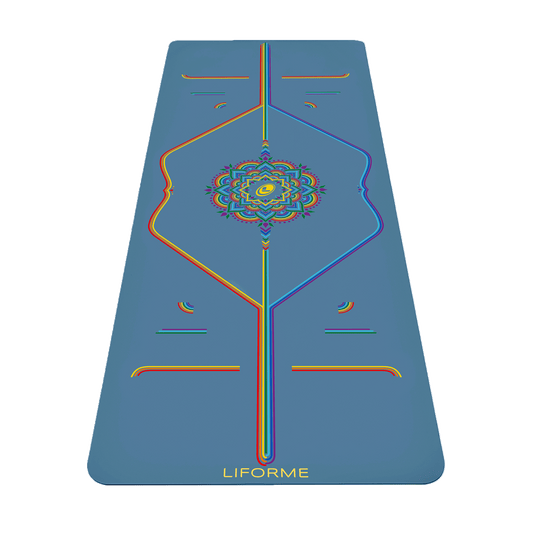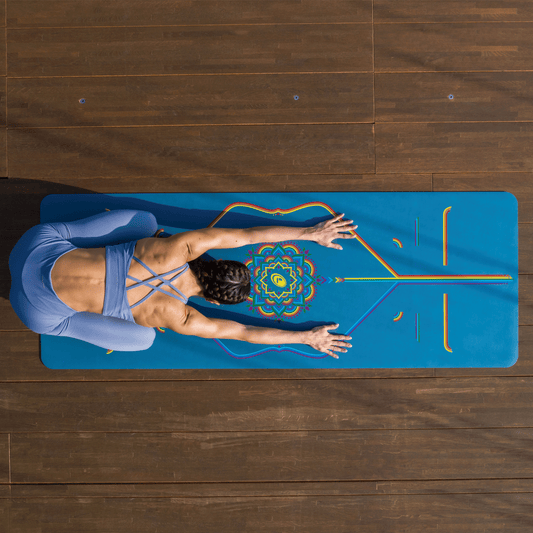Most people that do yoga are familiar with the classic vinyasa flow sequence known as the Sun Salutation (Surya Namaskar) but fewer people practice its companion, the Moon Salutation (Chandra Namaskar). This may be because there isn’t one established, canonical way to do a Moon Salutation. Instead, there are many variations on this theme.
If we think of the Sun Salutation as strong, yang, and heating, a Moon Salutation tends to be more gentle, yin, and cooling. To that end, it’s common to do a Moon-based sequence when winding down a yoga session and to spend a little more time stretching in each posture.
In the following sequence, you’ll sometimes be facing the side or back of your mat, cycling through positions like the moon as it moves across the sky.
Moon Salutation Sequence (Chandra Namaskar)  1. Standing Crescent (Urdhva Hastasana Variation)
1. Standing Crescent (Urdhva Hastasana Variation)
Sanskrit Meaning: Urdhva (Upwards) Hasta (Hands)
Benefits: Stretches and lengthens your side-body and shoulders. Improves balanace.
Step-by-Step:
- Begin the sequence by coming to stand in Mountain Pose at the front of your mat. On an inhalation of breath, lift your arms overhead and bring your palms to touch.
- Lean your upper body to the right. Stay grounded in your feet. Your hips may naturally move a little to the left to maintain balance, which creates a crescent-shaped arc along your right side.
- Feel the stretch all along your left side. After several breaths, come back upright.
- Take the same position to the left side.
2. Goddess (Utkata Konasana)
Sanskrit Meaning: Utkata (Powerful) Kona (Angle)
Benefits: Build strength in your legs, hips, and glutes.
Step-by-Step:
- Step your left leg wide and turn to face the long side of your mat.
- Turn your toes out 45 degrees (aligned with the 45-degree lines on your mat) and bend your knees to bring your thighs toward parallel to the floor.
- Take your arms into a cactus position.
Optional variation: Include intuitive movement in Goddess, maybe moving from side to side or trying different arm positions.

3. Crescent Lunge (Anjaneyasana)
Sanskrit Meaning: Anjani (Hindu Goddess)
Benefits: Stretches your abdomen, intercostal muscles, quads, and hips. Improves balance.
Step-by-Step:
- Pivot on the ball of your left foot as you turn to face the front end of your mat again. Release your hands to either side of your right foot and your left knee to the mat (take padding under the knee if it’s sensitive), coming into a low lunge.
- On an inhalation, lift your arms overhead.
- After several breaths, release your hands the front of your mat.
- Lift your left knee. Keeping your body low, crawl your hands around until you are facing the back of your mat with your left foot forward.
- Repeat Anjaneyasana in this position.
Optional variation: Repeat the Standing Crescent side bend position in Anjaneyasana for an additional balance challenge.
4. Side Lunge (Skandasana)
Sanskrit Meaning: Skanda (A war god)
Benefits: Hamstring, hip, and side stretch.
Step-by-Step:
- Releasing your hands and lifting your right knee, keep low as you move back to the front of your mat.
- This time, face the long side as you come into a squat with your right leg while keeping your left leg extended.
- Take your right arm inside your right leg and open your chest to the left, bringing your left arm and your gaze up toward the ceiling.
- After several breaths, move into Skandasana on the other side with your left leg bent and your right leg extended.
Optional variation: Move fluidly from Skandasana on one side to the other several times.

5. Pyramid (Parsvottanasana)
Sanskrit Meaning: Pars (Side) Uttana (Intense Stretch)
Benefits: Stretches your hamstrings and calves.
Step-by-Step:
- Release both hands to the floor and move back to face the front of your mat.
- Straighten both legs and release your heels to the floor, turning your left toes out to 45 degrees. Widen your stance (side to side) and step your back foot forward as necessary to square your hips to the front of the mat. Forward bend over your right leg.
- After several breaths, keep your upper body low and spin on the balls of your feet to turn to face the back of your mat.
- Repeat Pyramid, forward bending over your left leg.
6. Triangle (Trikonasana)
Sanskrit Meaning: Tri (Three) Kona (Angle)
Benefits: Stretches your hamstrings, hips, and shoulders. Improves core strength.
Step-by-Step:
- Keeping your legs wide, turn back to the front of your mat. Step your left foot back a bit and open your left toes to 90 degrees (parallel with the back of your mat and End-to-End lines).
- Bring your right hand to your right shin or ankle, or a block inside or outside your right foot.
- Draw your left hand along the inside of your right arm to open your chest to the left and your left arm toward the ceiling.
- After several breaths, return your left hand to the floor and then move through a wide straddle to transition to Triangle pose facing the back of your mat with the left foot forward.

Tips for Practicing this Sequence
1. Have a few props handy: a block and a Yoga Pad (or blanket) will be the most useful.2. In Sun Salutations, every movement happens on a breath. In this sequence, inhalations are used when lifting the body up. Otherwise, breathe as comes naturally.
3. Personalize this sequence by incorporating intuitive movement, particularly in Goddess and Skandasana.
Benefits of Incorporating Moon Salutations into Your Practice
Physical Benefits: This particular Moon Salutation pays particular attention to your side body and stretching the ribcage in every direction. Along the way, there’s plenty of shoulder and hamstring stretching.
Foster Your Connection with Nature: Use your flow to connect to natural rhythms. Moving cyclically encourages you to embrace perpetual transformation. Just as the moon waxes and wanes every month, people are constantly moving through different phases.
Reduce Stress: Moving your body is a natural way to process stress hormones. When you focus your mind on a specific theme or intention, you also ground your attention in the present moment, giving your brain a much-needed break from its habitual frenetic activity.
Moon Rise
If you’re in the habit of beginning your flow yoga sessions with Sun Salutations, try ending them with Moon Salutations to balance your energies. A Moon sequence is very open to interpretation, so use our poses as a point of inspiration for your own lunar journey.
Mood Mat : Cosmic Moon Yoga Mat





































